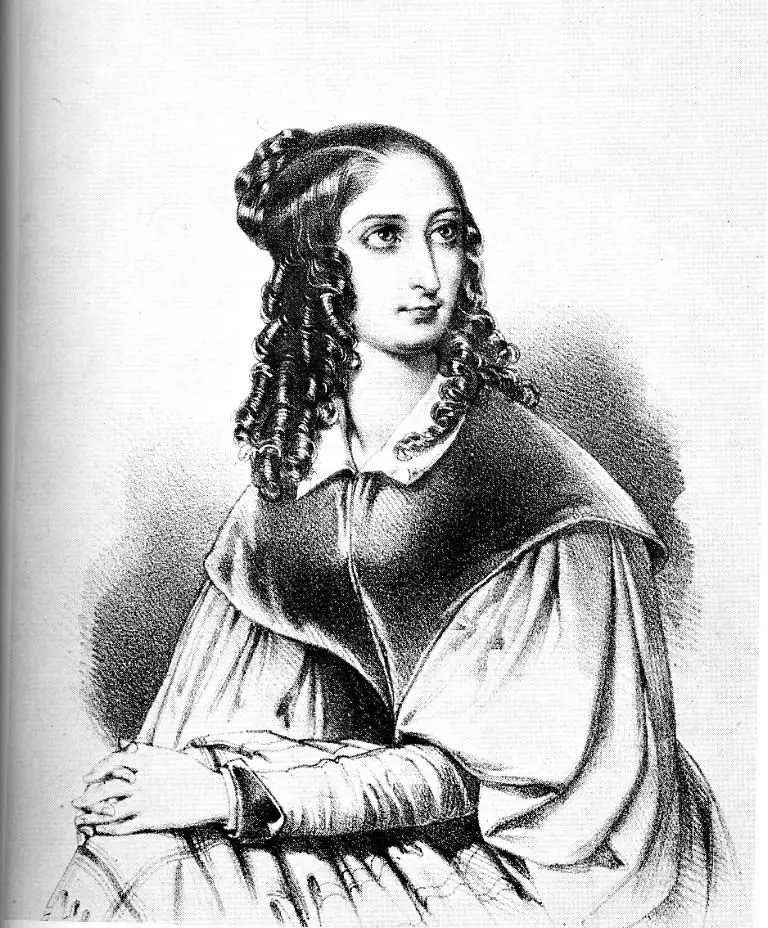
Portrait of Flora Tristan
"My grandmother was a strange woman" Paul Gauguin wrote in his memoirs. "She was called Flora Tristán…". He never got to know her... "What I can assure you is that she was a beautiful and noble lady... I also know that she dedicated her entire fortune to the labor cause, and that she traveled constantly ".
** Flora Celestina Teresa Enrique Tristán Moscoso (1803-1844) ** She was the daughter of a bourgeois Parisian and a Peruvian colonel who, when she died, left her a bastard due to a bureaucratic lapse. Disinherited, she had to give up that childhood mansion that characters like Bolivar and Bonpland frequented to get used to living in a Place Maubert slum in Paris . What she didn't get used to, she went to a abusive husband whom she married at the age of 17. There was no divorce and she ran away; her crazy one almost shot her dead once , and she accused him of pretending to be single when she sailed alone to South America, on a journey to claim an inheritance in Peru that would get her out of poverty. She only got a pension, but her uncle withdrew it when she read Pilgrimages of an outcast , story that the people of Lima burned outraged at how she portrayed them. Just as critical was London walks with the ravages of English capitalism.
The writer's travels were an incentive in her fight for female emancipation and she against the death penalty she shouted "Workers of the world, unite!" before Marx and Engels . Her last journey was a tour of French cities to spread the idea of a Workers' Union. The diary of this adventure was left unfinished when her death surprised him in Bordeaux, four years before her grandson was born.
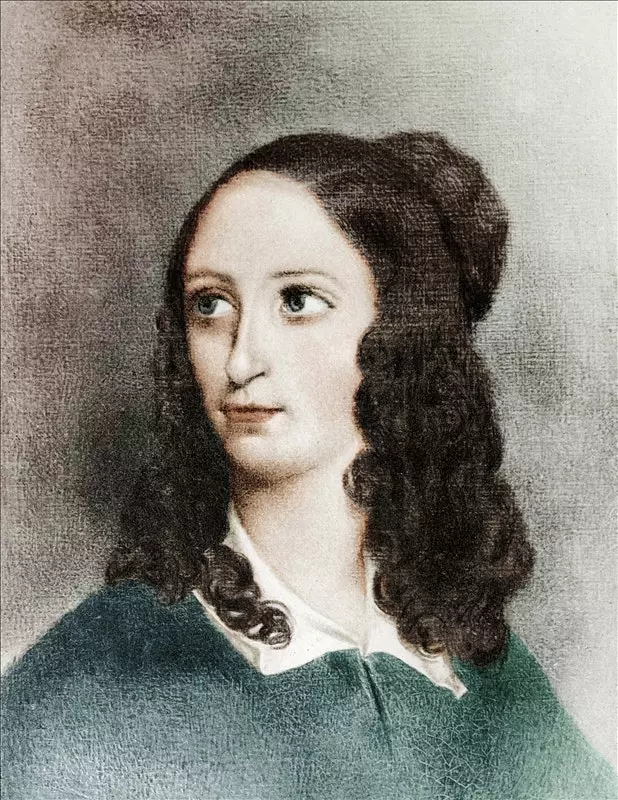
Flora Tristán shouted "Workers of the world, unite", before Marx and Engels
AN OUTRAGE IN ENGLAND
Flora Tristan was in England four times . The first of them, in 1826 , she working as a maid for a London family. She returned in 1831, in 1835 and in 1839 . When she a year later she posted London walks , she had already taken a liking to the "monster city". To write the book, she visited fringe places that never appear in travel guides: factories, brothels, asylums, prisons… She also disguised herself as a Turk to enter the British parliament, as women were prohibited from entering. The text below corresponds to a fragment of this story, accessible in the Virtual Library of Miguel de Cervantes.
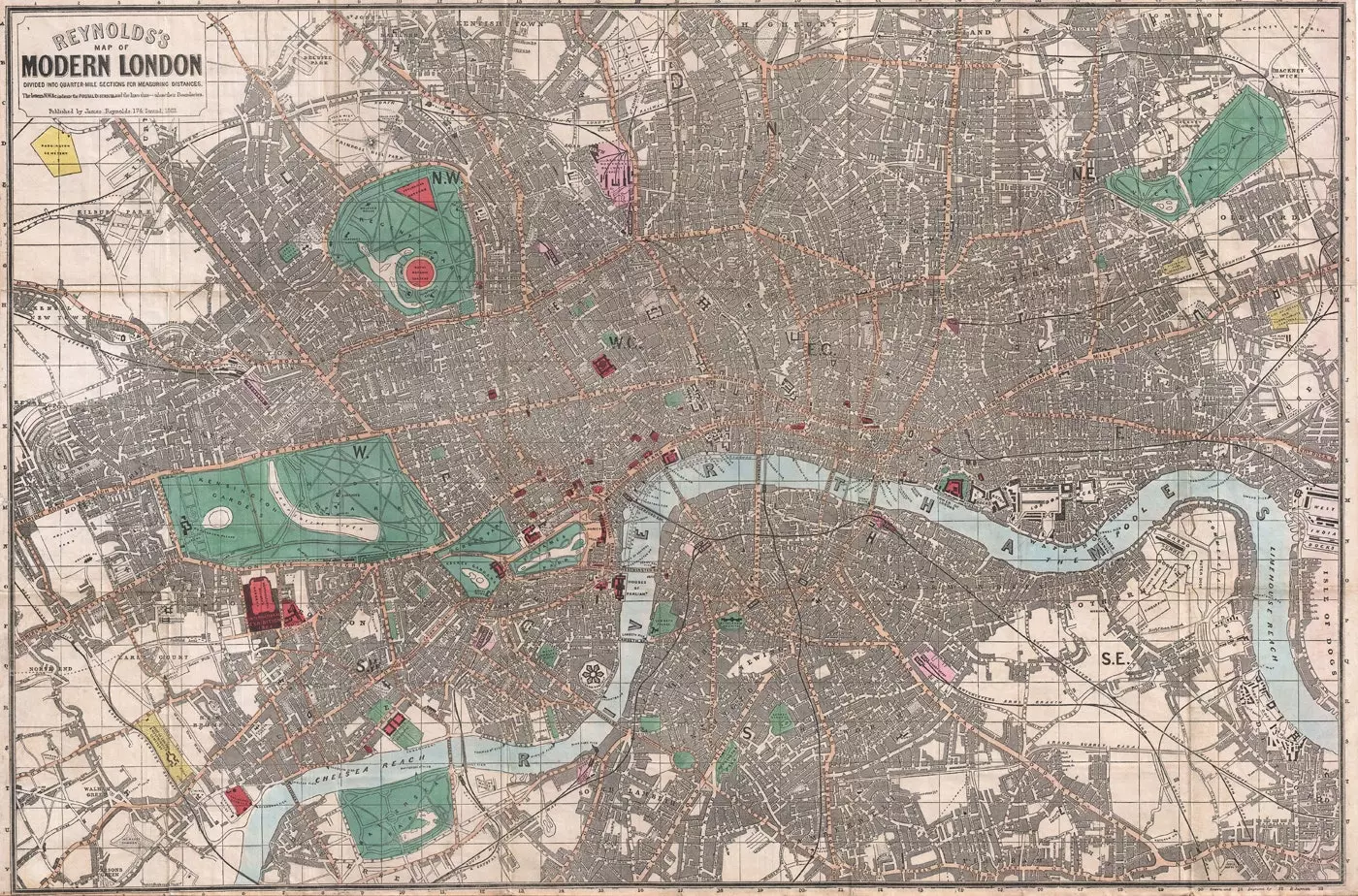
Map of London in the early 19th century
What an immense city London is! […] At first glance, the foreigner is admired by the power of man; later it looks like overwhelmed by the weight of that greatness and he feels humbled by his smallness . Those innumerable boats, ships, buildings of all immensity, of all denominations that, through long leagues, cover the surface of the river which they reduce to the narrow space of a canal; the grandeur of those arches, of those bridges that one would think were thrown by giants to unite the two shores of the world; the docks, huge warehouses or stores that occupy 28 acres of land; those domes, those bell towers, those buildings to which the vapors give strange shapes; those monumental chimneys that release their black smoke into the sky and announce the existence of large factories. The indecisive appearance of objects around you; All this confusion of images and sensations disturbs the soul, which is as if stunned.
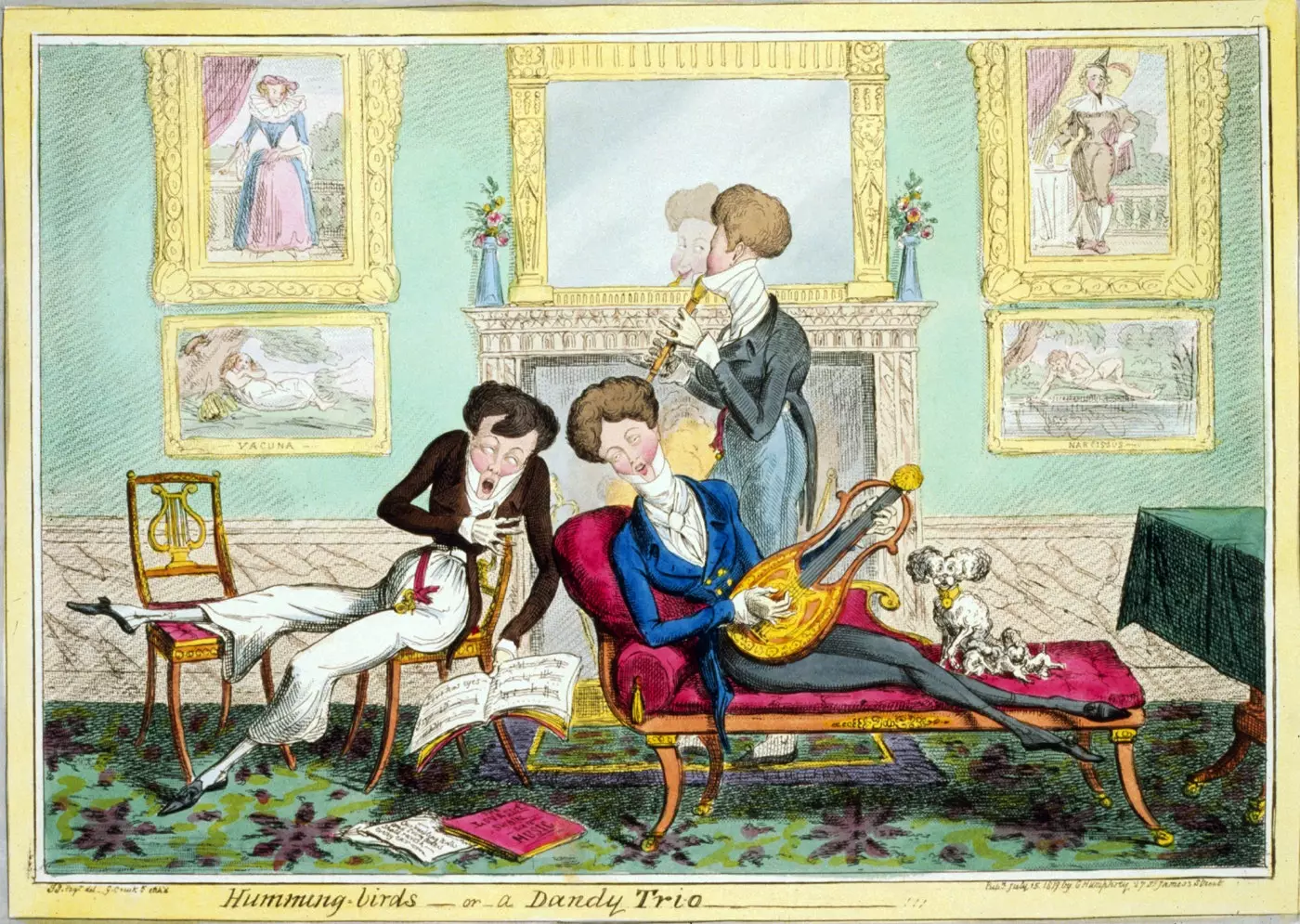
caricature of english dandies
But it is above all at night that you have to see London! London, with magical light from millions of lamps powered by gas, appears resplendent! Its long streets, which go on to infinity; its shops, where the streams of light make the multitude of masterpieces that human industry produces shine in a thousand colors; that world of men and women who pass and review around one; all this produces, the first time, an intoxicating effect. While, by day, the beauty of the sidewalks, the number and elegance of the gardens, whose severe-style railings seem to distance the domestic home from the crowd, the immense extension of the parks, the graceful curves that outline them, the beauty of the trees, the multitude of magnificent carriages, pulled by magnificent horses that travel the routes, all those splendid achievements have something of a magic that clouds judgment; what's more, there is no foreigner who is not fascinated when entering the British metropolis. […]
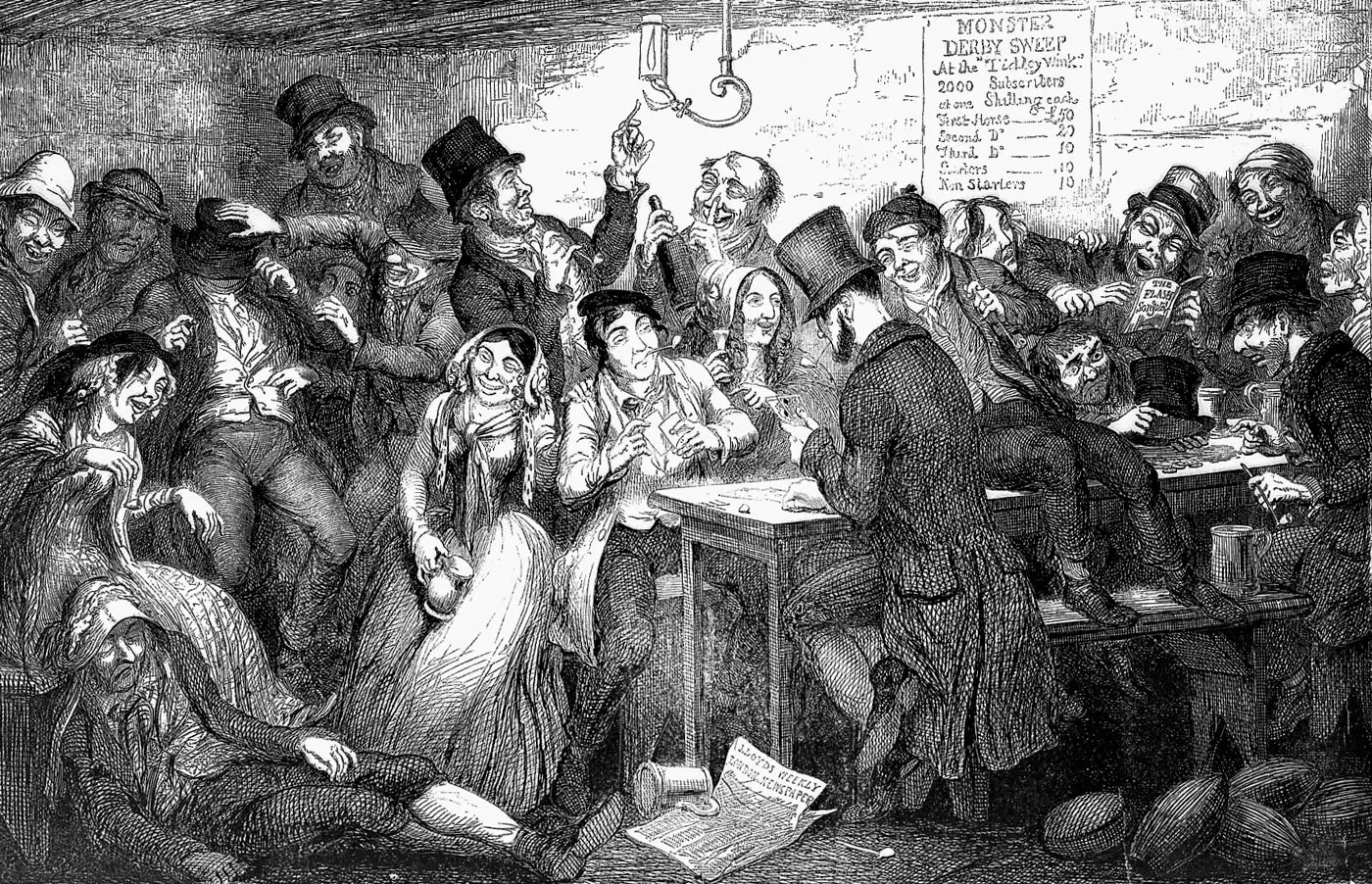
London scene of life: drunks and gamblers in a tavern
London , capital and business center of the British Empire, incessantly attracts new inhabitants ; but the advantages that, under this relationship, it offers to the industry are balanced by the inconveniences that result from the enormity of the distances. […] Ordinary trips are from a league and a half to two leagues. In this way, no matter how few things a person has, they are exposed to walking five to six leagues a day; you can easily imagine the time he wastes: on average, half of the day is spent wandering the streets of London. If moderate exercise is healthy, nothing kills the imagination or paralyzes the spirit and the heart more than extreme and permanent fatigue . The Londoner, who returns home at night, exhausted by the day's travels, cannot be cheerful, spiritual, or willing to indulge in the pleasures of conversation, music, or dance. […] Such is the fate of the inhabitants of the monster city !, always overwhelmed by fatigue, from which their physiognomy has taken the imprint and their character has turned sour.
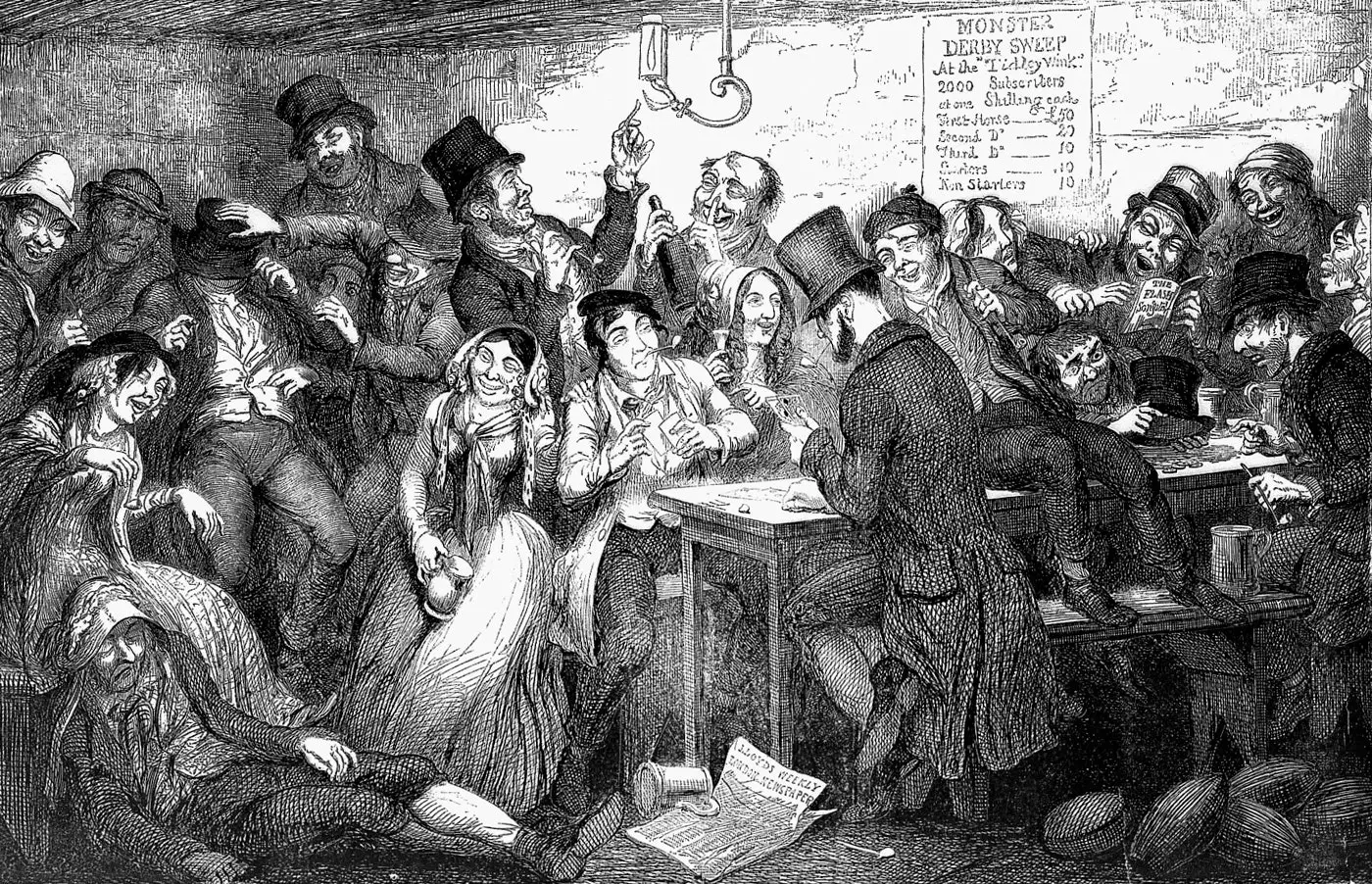
London scene of life: drunks and gamblers in a tavern
London has three quite different sectors : La cité, the West end and the faubourgs. The first is the old city, which, despite the fire that occurred under the reign of Charles II, has preserved a large number of small narrow streets, misaligned, poorly built, and the banks of the Thames obstructed by houses bathed in their foundations by the waters of the river. […] The inhabitants of this division are considered by those of the west end as the thoroughbred John Bull; are, for the most part, excellent merchants who are rarely wrong about their interests and to whom nothing affects, except these same interests. The shops, where many of them have made great fortunes, are so gloomy, so cold and so damp, that the West End aristocracy would disdain such premises to keep their horses. The habits, customs and language of the cité are noted for their forms, their nuances, their uses, their phrases, which the elegant West End call vulgarity.
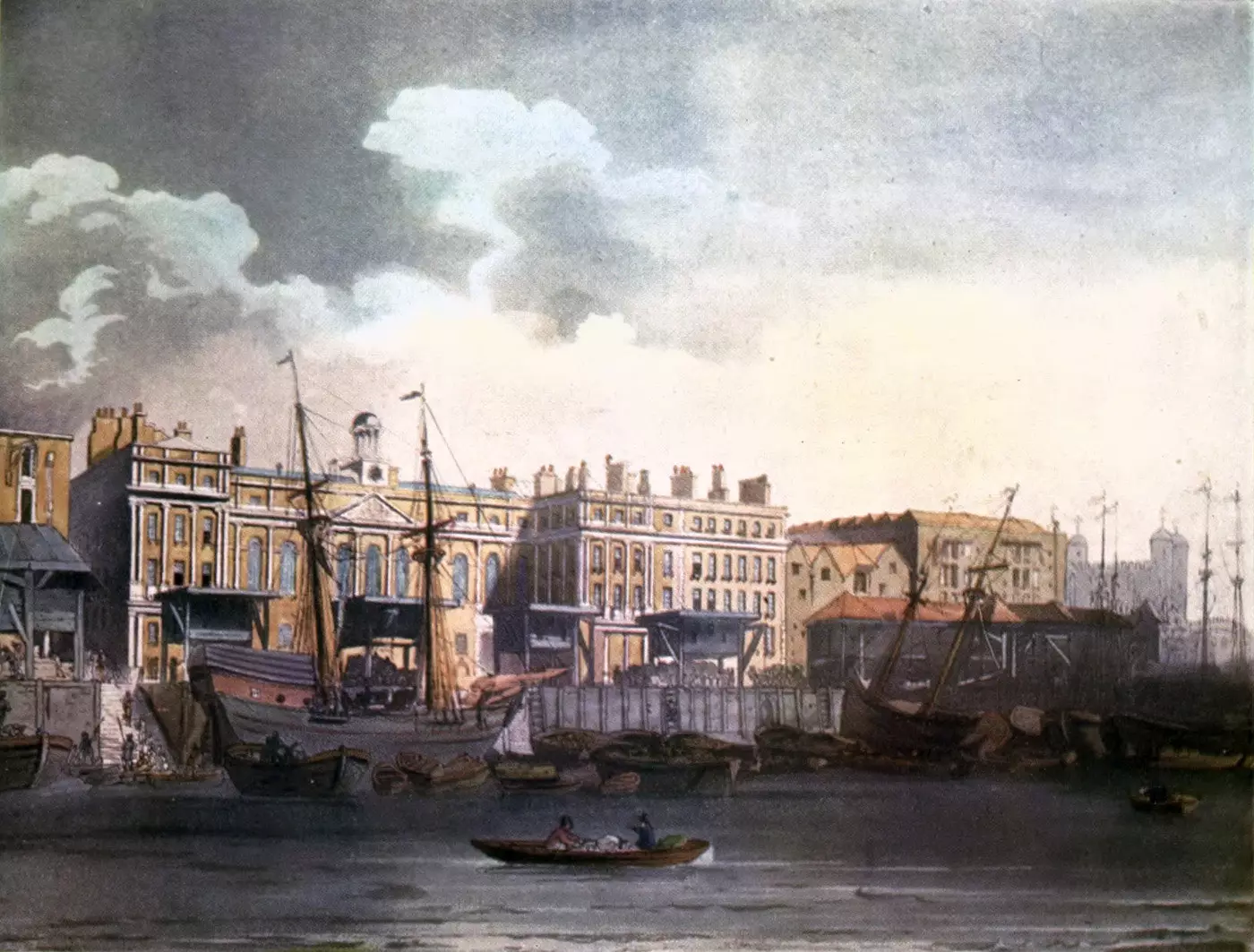
london pier
The West end is inhabited by the court, the high aristocracy, the elegant commerce, the artists, the provincial nobility and foreigners from all countries —this part of the city is superb—; the houses are well built, the streets well aligned, but extremely monotonous. There are the gleaming coaches, the magnificently decked ladies, the dandys cavorting on magnificently caparisoned horses, a world of servants clad in rich livery and armed with long sticks with gold and silver hilt.
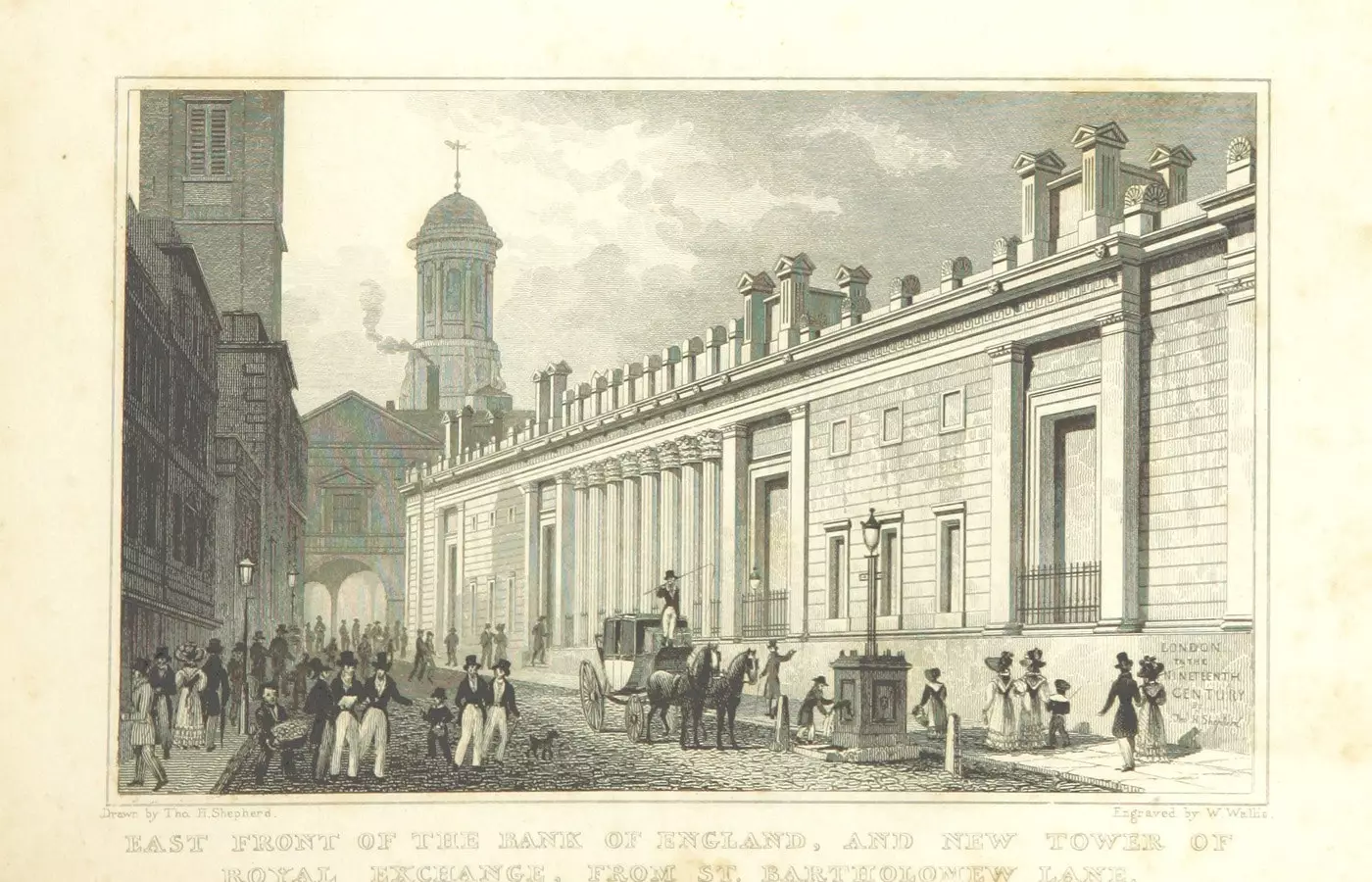
Bank of England and the London Stock Exchange tower (1828)
The faubourgs, suburbs because of the cheap rents, lock up the workers, the public women and that mob of men without destiny that the lack of work and vices of all kinds lead to wandering , or those who misery and hunger force to become beggars, robbers, murderers. The contrast presented by the three sectors of this city is that which civilization offers in all the great capitals ; but it is more shocking in London than anywhere else.
Text taken from Paseos por Londres, by Flora Tristán (Source: Miguel de Cervantes Virtual Library, provided by the National Library of Peru).
Follow @MeritxellAnfi
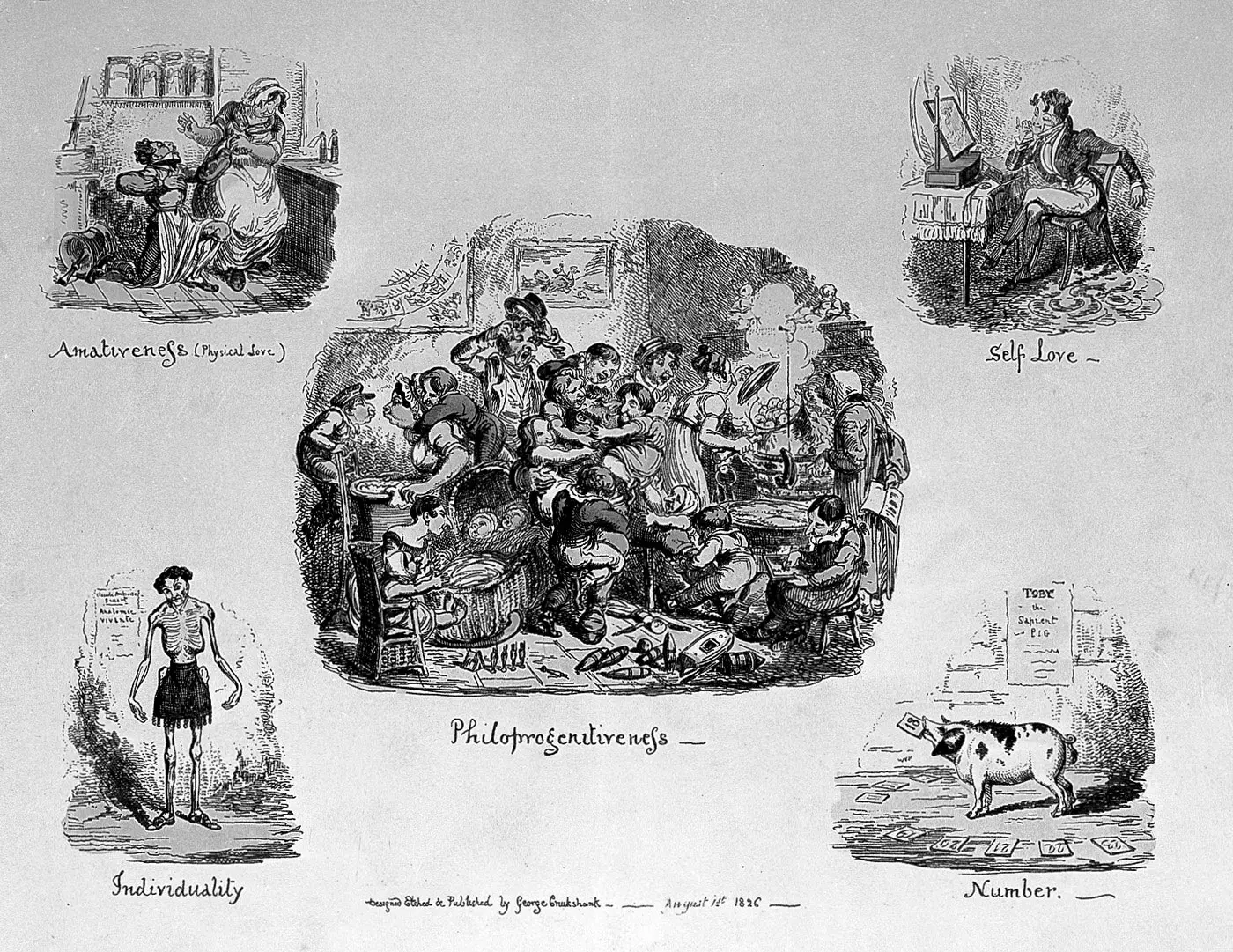
Caricature of various scenes of London life
